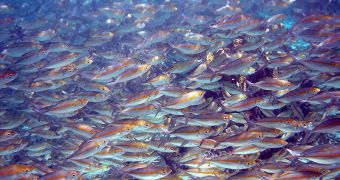A group of experts from the University of California in Davis (UCD), led by postdoctoral researcher Chelsea Rochman, determined in a new investigation that harmful chemicals in fish also come from plastic debris in the world's oceans.
Previous studies have suggested that dangerous substances in the water itself may be contaminating the fish, omitting the role of plastics and plastic compounds. Synthetic and organic pollutants alike can be carried on various items made of this durable material that takes around 600 years to break down.
Details of the new research were published in a recent issue of the journal Nature Scientific Reports. The study highlights how fish ingest various types of plastics, and then become contaminated with a wide array of chemicals these materials contain.
Ecologists have known for many years that larger predatory species in an ecosystem tend to accumulate the highest amounts of toxins within their bodies. This happens because these animals consume smaller species, which are contaminated by various chemicals.
The same thing holds true for fish, where large species such as tuna tend to contain large amounts of polychlorinated biphenyls (PCB), mercury and other dangerous dioxins. Until now, the role that plastic played in moving these substances through the food chain has been left largely unexplored.
“The ocean is basically a toilet bowl for all of our chemical pollutants and waste in general. Eventually, we start to see those contaminants high up in the food chain, in seafood and wildlife,” says Rochman, quoted by NPR.
The conclusions of this study should be worrying for everyone, because canned tuna was determined to be the second-most popular fish product consumed in the United States last year. These statistics were provided by the US National Fisheries Institute.
“Plastics – when they end up in the ocean – are a sponge for chemicals already out there. We found that when the plastic interacts with the juices in the [fish's] stomach, the chemicals come off of plastic and are transferred into the bloodstream or tissue,” the team leader explains.
This material is also very likely to cause liver and digestive tract problems for the fish that consume it. A higher incidence of tumors was also observed in numerous large fish species, the researchers add.
Always keep in mind that the US Environmental Protection Agency (EPA) only manages to test just a small amount of the fish that is consumed in the United States for contaminants. Most of the fish currently on the market is imported, and raised in waters that are not monitored by the EPA.

 14 DAY TRIAL //
14 DAY TRIAL //